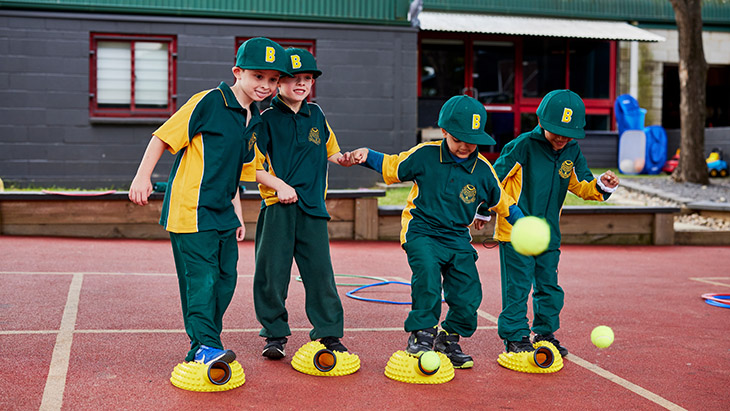Evidence-based strategies for autism
Consider adjustments to communication style
Provide a clear schedule and routine
Visual cues or schedules can help students understand what is coming up and when they should complete a transition from one activity to another. Access our class schedule page.
Give a warning when a transition is coming up
Students who find it difficult to move from one activity to another often feel less unsettled if they are warned about the transition (for example: “in two minutes we are going to pack away and go to art”). Provide clear instructions about the transition.
Provide effective feedback
Give encouragement and guidance
Consider giving effective feedback immediately when students are learning a task or behaviour. This can be reduced gradually as they build their capability.
Encourage using interests
Some students may be highly motivated by their interests. Consider letting a student engage in a rewarding learning or wellbeing activity related to their interests as an encouragement for their efforts.
Express positive regard and support
Teacher emotional support and encouragement helps a student on the autism spectrum achieve better results. Help a student know that they are valued and supported.
Work collaboratively
Provide lots of opportunities for students to work together
Students with and without autism can get to know each other and build friendships through working together. Students can also learn through watching others. Consider ways in which you can facilitate a student’s interactions with others in a group. Read more about guiding students to balance their own workload when supporting a peer.
When appropriate, give individualised tasks
Consider giving specific roles or tasks to students in a group if a student on the autism spectrum is working with tailored materials or instructions. You could also select a student in a group to be a tutor or mentor.
Tailor activities to be as inclusive as possible
Some tasks may need to be modified for a student
Where you can, use concrete materials (such as images to supplement text, blocks to model mathematics), rather than abstract concepts.
Where needed, provide simplified text and pictures showing how to complete a task.
Where possible, add student interests into the learning process
For example, if a student is motivated by cars, offer a small bundle of toy cars for addition and subtraction.
Provide lots of opportunities to practise
Students may need to practise a task or behaviour many times
Lots of time to practise in different settings and with different materials can help students learn to use that skill in other situations.
Offer fewer tasks with more opportunities to practise
This helps students to learn tasks and may be more helpful than offering many tasks with little opportunity to practise.
Help them with one to one attention
When a task is new, students will learn best with help (for example, prompts, demonstrations, or encouragement). This help can be gradually reduced as they become more capable. Help can be provided by teachers or other students.
